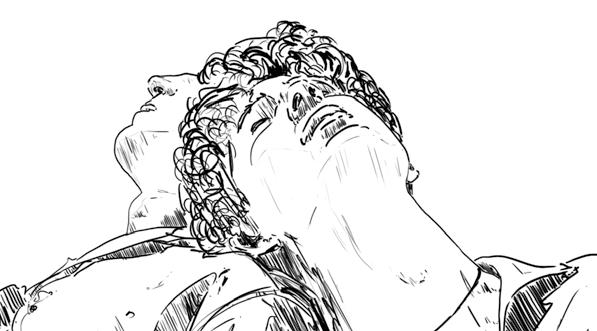
5 minute read
Appreciation or Appropriation?
OR APPROPRIATION? Appreciation AQUILA
Fashion designers have always drawn influence and inspiration from the world around them, and it seems that borrowing from other cultures is an essential element of the creative process. However, the fashion industry is constantly under scrutiny to ensure political correctness: a boundary which must continually be reconsidered and redefined. Cultural appropriation has emerged as one of the key issues in the industry, with almost every big fashion house, and several celebrities, being accused of it, but it is important that appreciation is not mistaken for appropriation, in order to ensure that fashion continues to be a space where different cultures can be celebrated.
Advertisement
Cultural appropriation is defined as the unacknowledged or inappropriate adoption of the customs, practices or ideas of a group of people or society by members of another group of people or society. It often becomes controversial when members of a more dominant culture appropriate from disadvantaged or minority cultures. Experimentation and borrowing from other cultures is not a problem and it’s clear that fashion thrives when influenced by a wide range of styles, but appropriation differs from appreciation under the following circumstances: there are power inequalities between the cultures; the source is not accredited and historical context and cultural sensitivities are ignored. Often, items hold significant religious or cultural meaning to their traditional owners, or have been subjugated and exploited in the past, therefore when they are turned into a fashion accessory and are profitted off by big European and American brands, it often causes offense. A prime example of the complete disregard for the contextual significance of an item is when Gucci sent white, non-Sikh models down the Autumn/Winter 2018 runway wearing turbans and faced considerable backlash from the Sikh community.
‘THE SIKH TURBAN IS A SACRED ARTICLE OF FAITH, @GUCCI, NOT A MERE FASHION ACCESSORY. #APPROPRIATION’ -
@SIKH_COALITION
When Chanel revealed it’s $2,000 wood and resin boomerang, adorned with their logo, as part of it’s Spring/Summer 2017 pre-collection, many people immediately spotted the distasteful appropriation of Indigenous Australian culture. This was enhanced when Nathan Sentance, an Indigenous project officer at the Australian Museum, highlighted that the boomerang cost almost 10% of the average annual income of Indigenous Australians, underlining the exploitative nature of this item. The frustrating part is that Chanel has not been affected by this backlash, and still sold these boomerangs to real customers, including Jeffree Star who posted an Instagram of him playing with his new ‘toy’. It is likely that a team at Chanel spent months designing the item and it is hard to believe that they were totally unaware of the connotations and implications of their actions. To some, it seems that their ruthless intention is always to make money and gain publicity, regardless of the consequences and exploitation of others. Chanel’s response to their slip up was simply a press release which seemed to lack true remorse: “We’re extremely committed to respecting all cultures, and regret that some may have felt offended.”
‘FOR SO LONG INDIGENOUS AUSTRALIA WAS A CULTURE DENIED, A CULTURE INTERRUPTED AND THEREFORE NOT ACKNOWLEDGED,’ -
PETER DENHAM, DIRECTOR OF CURATORIAL AND EXHIBITIONS AT THE MUSEUM OF APPLIED ARTS AND SCIENCES
The controversy surrounding dreadlocks and cornrows is another high profile case associated with appropriation, as the hairstyles are valued by many black communities as a symbol of the oppression they have overcome and a representation of their identity. However, dreadlocks are actually a part of several different cultures and cannot be considered exclusive to one racial culture. The hairstyle first appeared in the West Indies around 1844 from the ‘coolie’ trade, when workers from China and India were sent there to replace the now-illegal slaves and one of the early origins of dreadlocks was from Hindu holy men, who replicated the hair of the god Shiva. Ancient Greeks and Egyptians were also reported to wear dreadlocks and it was said that Celts had ‘hair like snakes’ in older texts, which has since been translated as meaning dreadlocks. Therefore, to say that dreadlocks belong to particular cultures seems to disregard the rich and complex religious and cultural significance which the hairstyle has all around the world.
In terms of high fashion, in Marc Jacobs’ Spring/Summer 2017 show, all the models wore candy-coloured dreadlocks, inspired by cyber goths. However, critics were quick to point out that the majority of the models were white, and in 52 of the looks in the show, less than ten were models of colour. Jacobs’ controversial response provoked further outrage when he responded on Instagram: “All who cry ‘cultural appropriation’ or whatever nonsense about any race of skin colour wearing their hair in a particular style or manner - funny how you don’t criticize women of colour for straightening their hair”, which demonstrates a lack of understanding for the issue, but it also raises thoughts about whether political correctness restricts creativity and breeds over-sensitivity. Some of the most well known cases of appropriation attract negative attention when white celebrities are praised for pioneering ‘new’ styles and making a bold statement with dreadlocks or cornrows, without crediting the origins of the hairstyle. Such celebrities who have worn these hairstyles include Kylie Jenner, Kim Kardashian and Justin Bieber, although they received significant backlash, we must question whether their behaviour is racist. Amandla Stenberg illustrated this point well when she said “I wish America loved black people as much as it loves black culture, which highlights the deep rooted prejudices and racism which many have faced due to the impact of Eurocentric ideals which we are conditioned to believe are ‘beautiful’”.

‘JENNER’S USING HER FAME TO CALL ATTENTION TO HER HAIR, WHICH MIMICS BLACK CULTURE, BUT NOT TO THE RACIST VIOLENCE TAKING BLACK LIVES.’ -
AMANDLA STENBERG
The appreciation of other cultures can aid understanding and promote creativity, and part of what makes design so interesting is the combination of a diverse range of styles, cultures and ideas. Problems arise when designers don’t undertake proper research to reference and appreciate a culture and the fashion industry needs to become more aware and diverse in general. The fast pace of the fashion industry certainly does not help, as sometimes designers do not have time to consider the fine boundary between cultural appropriation and appreciation. It seems that to prevent cultural appropriation designers should try to incorporate people from the culture they are inspired by, whether this be in producing, modelling or designing the clothes and we must also consider who benefits or profits from the product.
The key is to consult, collaborate and consider the cultural context.
A Slade, Editor in Chief






